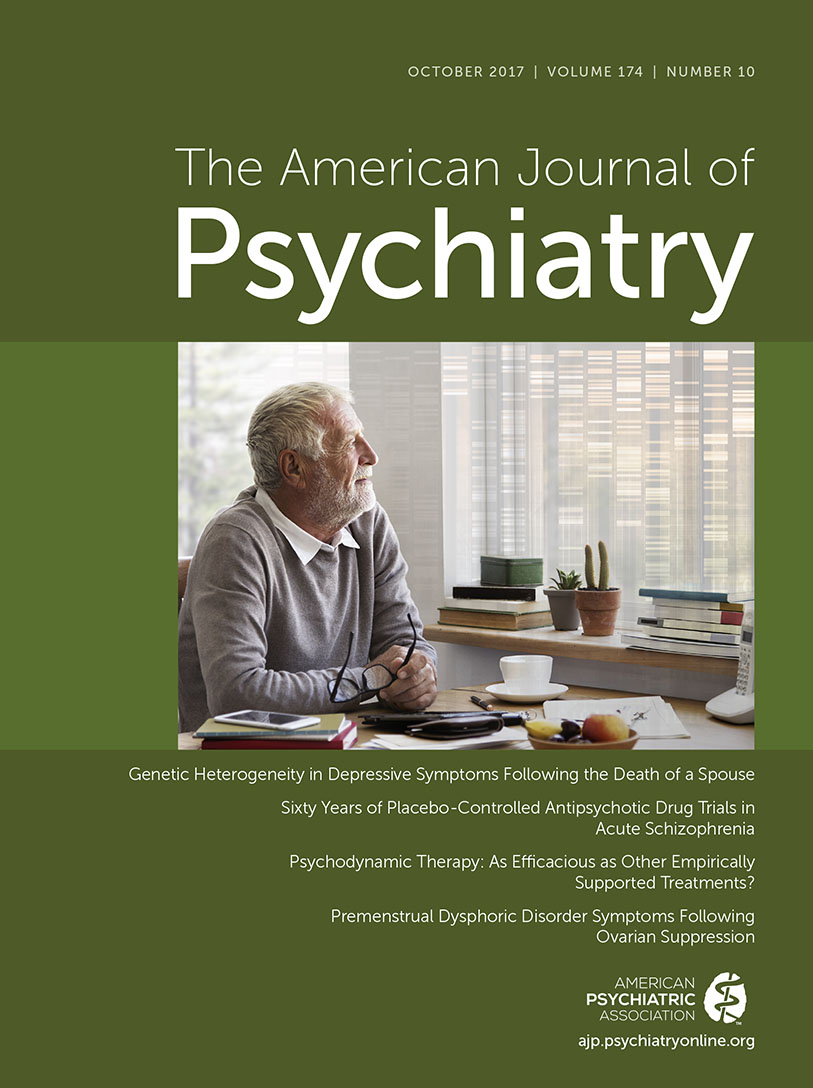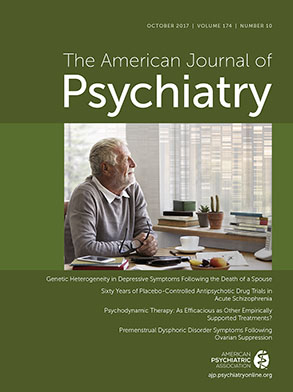Clozapine remains the only medication with a regulatory indication for treatment-resistant schizophrenia, and it has been almost 30 years since the publication of the study that led to that approval (
1). In addition, clozapine has regulatory approval for the prevention of suicide in schizophrenia, and it has been 14 years since the publication of the study that led to that indication (
2). Although the epidemiology of treatment resistance and/or suicidality in schizophrenia is not well established, most estimates suggest that at least 30% of individuals with a diagnosis of schizophrenia fail to derive adequate benefit from other antipsychotic medications. One challenge highlighted in a recent
Journal article (
3) is the fact that of 42 reports of clinical trials involving individuals with treatment-resistant schizophrenia, half did not provide operational criteria and only two utilized the same criteria. This and other factors (
4) have contributed to the difficulty is assessing the superiority of clozapine over other antipsychotic medications and the conclusions of a recent network meta-analysis (
5): “At present, insufficient blinded evidence exists on which antipsychotic is more efficacious for patients with treatment-resistant schizophrenia.”
At the same time, a number of other valuable studies utilizing observational data (
6,
7) have shown significant advantages for clozapine over other oral antipsychotics in reducing rates of relapse, hospitalization, and all-cause discontinuation of medication. Although randomized controlled trials remain the gold standard for evidence-based medicine, it is extremely difficult to include large, unselected patient populations in such trials. Problems can also occur, however, with residual confounding from selection biases in observational studies.
While improving clinical outcomes in treatment-resistant schizophrenia, including the risk of suicidality, the most efficacious drug, clozapine, can cause adverse effects, such as agranulocytosis, myocarditis, weight gain, type II diabetes, and dyslipidemia, resulting in potentially severe health risks. Studies of these adverse effects and associated outcomes such as hospitalization and mortality require thousands of patients and several years of follow-up in order to achieve sufficient statistical power.
Another critical concern in randomized controlled trials is the selection of patients. Those included in randomized controlled trials represent an atypical minority of the patient population, since the vast majority of patients are excluded because of refusal, substance abuse, suicidal or antisocial behavior, or psychiatric or medical comorbidity. Observational studies can overcome some of these challenges by using nationwide electronic databases of hospitalization, mortality, and filled prescriptions.
However, the main problem with these observational studies is also selection bias. Although the most important covariates such as sex, age, duration of illness, number of previous hospitalizations, history of suicidal behavior, and physical illness can be adjusted for in the statistical analysis, there always remains potential residual confounding associated with the individual characteristics of each patient.
Many clinicians are afraid to use clozapine because of the range of side effects that might occur, and all too often clozapine is discontinued prematurely because of an adverse effect that could potentially be managed (
8). Though response to clozapine varies and we do not have good biomarkers to predict outcomes, a substantial subgroup of patients derives very meaningful clinical and functional benefit. Therefore, it is important to have as a clear an understanding as possible of the potential benefits and risks of clozapine in comparison to other antipsychotic medications and no antipsychotic treatment.
In this context, Wimberley et al. (
9) have made an important contribution, reported in this issue of the
Journal, by evaluating rates of all-cause mortality and self-harm in association with clozapine treatment in individuals with treatment-resistant schizophrenia. They followed a population-based cohort of 2,370 individuals with treatment-resistant schizophrenia after Jan. 1, 1996, until death, first episode of self-harm, emigration, or June 1, 2013. Time to all-cause death and time to first episode of self-harm were analyzed in Cox regression models with time-varying treatment, adjusted for clinical and sociodemographic covariates. The authors found that the rate of all-cause mortality was higher for no clozapine compared with clozapine treatment (hazard ratio: 1.88, 95% CI: 1.16–3.05). This was mainly driven by periods of no antipsychotic treatment (hazard ratio: 2.50, 95% CI: 1.50–4.17), with nonsignificantly higher mortality during treatment with other antipsychotics (hazard ratio: 1.45, 95% CI: 0.86–2.45). Excess mortality was observed in the year after clozapine discontinuation (hazard ratio: 2.65, 95% CI: 1.47–4.78). The rate of self-harm was increased for nonclozapine antipsychotic treatment compared with clozapine (hazard ratio: 1.36, 95% CI: 1.04–1.78).
Their results demonstrated a nearly twofold higher mortality rate among individuals with treatment-resistant schizophrenia not being treated with clozapine compared with clozapine-treated individuals. In addition, their results suggest a harmful effect of other antipsychotics on risk of self-harm compared with clozapine. As they suggest, it remains to be determined to what extent the observed excess mortality after clozapine discontinuation is confounded by nonadherence and other unobserved factors and to what extent it is mediated by adverse effects from recent clozapine exposure or deterioration in physical or mental health precipitated by clozapine discontinuation.
Given that Wimberley et al. focused their study on patients meeting their criteria for treatment-resistant schizophrenia, it is also possible that their results underestimate the value of clozapine in reducing the risk of suicidality. In the International Suicide Prevention Trial (
2), only 27% of the 980 schizophrenia and schizoaffective patients considered to be at high risk for suicide and enrolled in the trial were categorized as refractory to prior medication.
One might have hoped that 30 years later we would have sufficient information to provide a richer array of evidence-based recommendations for the role of clozapine in the management of treatment-resistant schizophrenia. This report represents another step in that process; however, progress remains painfully slow. In addition, given what we do know, most experts would agree that clozapine remains highly underutilized. There are many reasons for that, and a thorough discussion is beyond the scope of these comments. However, we can make a plea to clinicians to give adequate consideration, in the context of shared decision making, to a therapeutic trial of clozapine in those for whom it is indicated.

